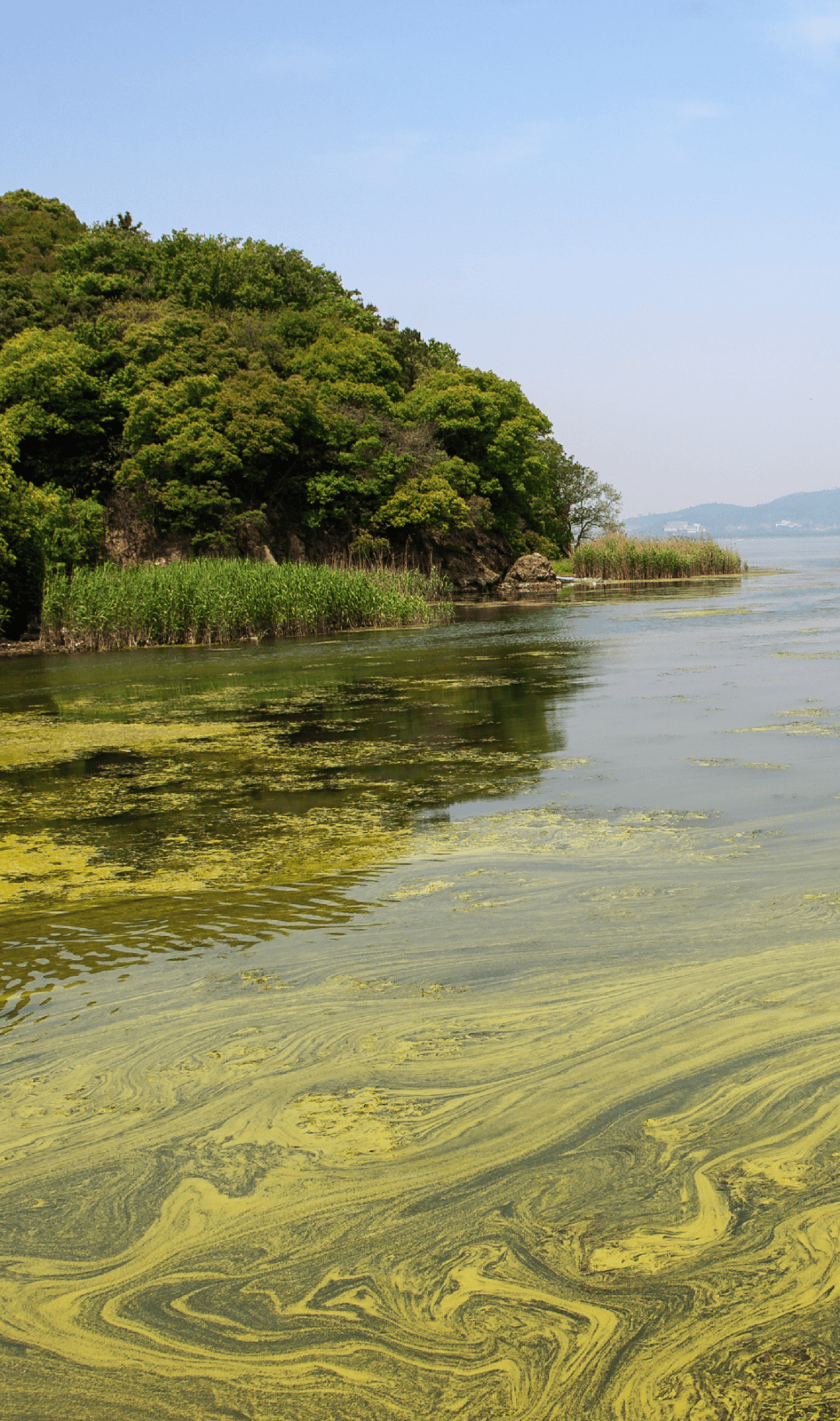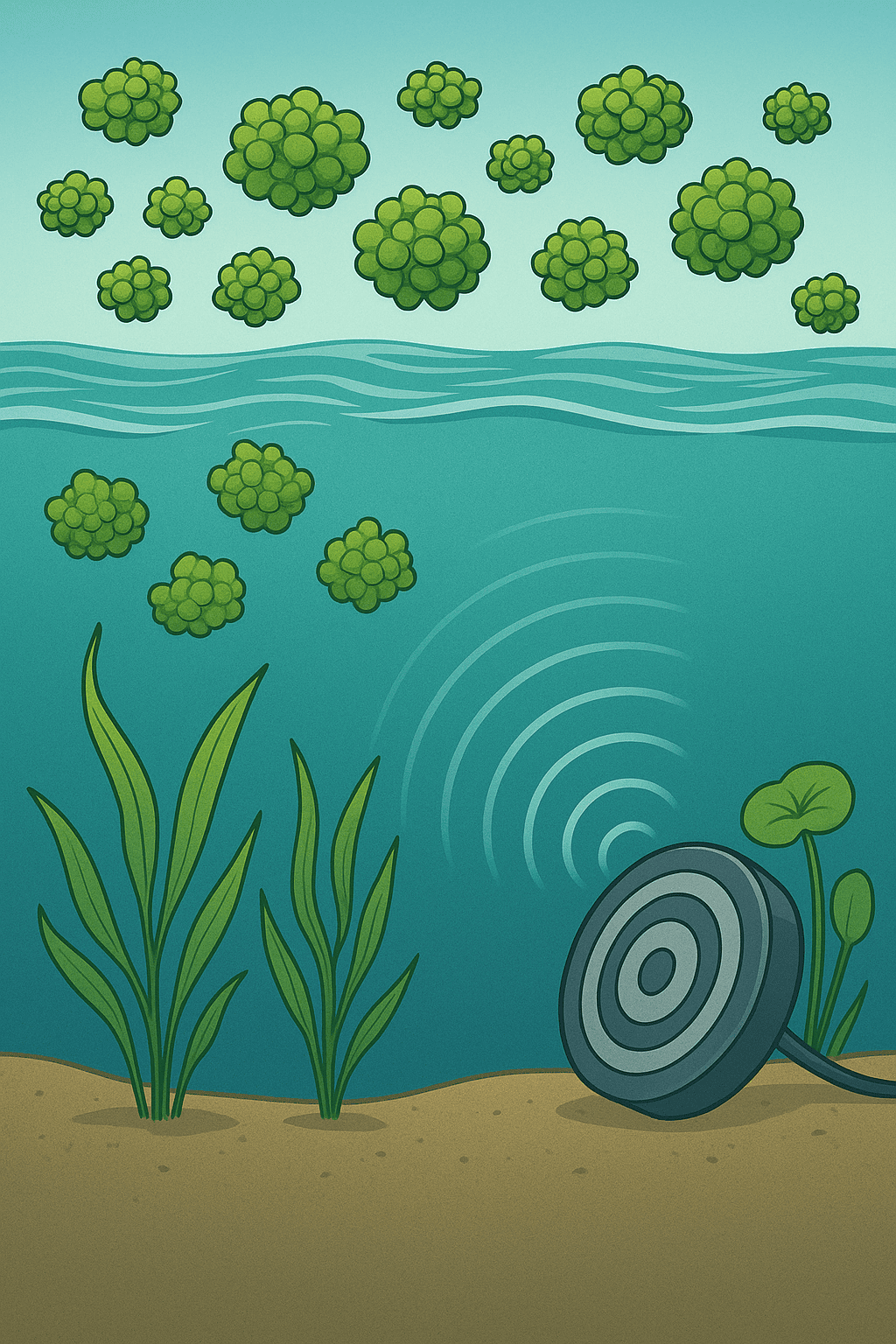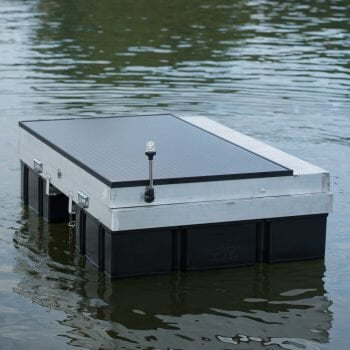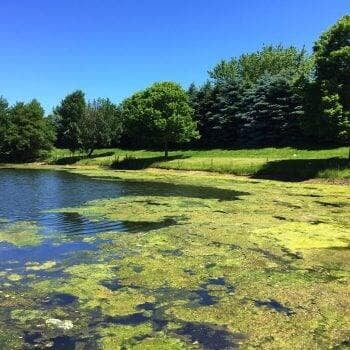Ultrasound: the Achilles heel of algae and biofilm in water
Learn how ultrasonic technology is leading to breakthroughs in the treatment of algae and biofilm in water.
You would be hard-pressed to find a bigger music critic than algae.
Not all ultrasonic waves are the same. At the extreme end, there is high-powered ultrasound that can cause the formation of bubbles that inwardly implode creating intense heat and pressure. This would be deadly not only for the treatment of algae but anything else in its path. Then there is the frequency range that, while not as severe, does effectively kill most algae. Algae as it turns out is very sensitive to ultrasonic waves.
How was it discovered that algae could be controlled via ultrasound? As in many cases it was an accidental discovery. It is said that around the turn of the 20th century, some gunplay near an algae-choked waterway led to a gradual clearing of the green scourge. Through observation an idea was born.
It would take generations of testing and validation to ultimately discover what caused those early results — and how to replicate them without leading to cavitation. The culprit behind biofilm formulation is anaerobic bacteria, which can lead to unwelcome colonies of Zebra Mussels and the associated havoc they can cause to health and property. Biofilm can be prevented by applying ultrasound. Ultrasonic technology, correctly used, can create turbulence that prevents the bacteria from setting in, thereby eliminating the food source for Zebra Mussels.


The perfection of ultrasonic technology
Ultrasound can produce frequencies that cause algae to hit its natural resonant frequency: the speed at which it will vibrate. Every material on earth has such a natural resonant frequency. It so happens, we located the frequencies that affect algae. Much like an opera singer causing a wine glass to shatter, frequencies generated by ultrasonic waves can create a structural resonance within blue-green algae that can disrupt the gas vesicles, causing it to lose buoyancy and sink below the surface where it can’t engage in photosynthesis and dies. In green algae, the effect is a bit different. The structural resonance can disrupt the cellular structure leading to its demise in 3-4 weeks.
Before this ultrasonic process could be adapted for commercial use, two key questions would need to be answered: What ultrasonic frequencies would need to be generated to affect different species of algae; and how to cast the frequencies close enough.
First, with approximately 2,000,000 species of algae and biofilm, it takes a variety of ultrasonic frequencies – broadcast at varying kilohertz (KHz) levels – to make a solid impact. Though early ultrasonic solutions used just a handful of frequencies, today, George Hutchinson – considered the father of modern algae ultrasound treatment — was able to identify 2,000 frequencies that proved to be the most effective, since this another 2,400 frequencies have also been discovered to cover a broader spectrum of algal species, that's a total of 4,400 frequencies. He had an assist from his brother, David, a musician whose commercial music editing program actually created these frequencies with a high-level of precision.
Some of these frequencies are adept at rupturing gas vacuoles or vesicles (like those found in blue green algae); others are effective at breaking the cell wall bonds, or interfering with the algae and biofilm reproductive cycles – often as soon as 24 hours after treatment.
Though these sonic waves are hazardous to the health of algae, they need to be introduced in a fairly-close arrangement to be effective – anywhere from 70 to 400 meters max, depending upon the target.
Creating an ultrasonic process for repeatable results
Much like floating warships, Algae Control Australia™ ultrasonic solutions create a veritable algae-crusading navy, ready for battle. To cope for the aforementioned distance limitations, devices are often deployed in multiples – creating concentric circles of coverage that work their destructive magic in symphonic synergy.
You’ll often find these floating algae fighters in places such as large lakes and reservoirs, private and recreation ponds, golf courses, wineries, municipal water facilities, storm retention ponds, and aquaculture settings.
As adept as these ultrasonic waves can be in dispatching multicellular organisms, they’re actually pretty safe for non-algal beings. Unlike chemicals or other treatment methods, ultrasound, properly done, is not harmful for the environment, creating no harmful effects on animals, fish, birds, and human beings, as well as beneficial aquatic plants. On that last notion, ultrasonic treatment isn’t effective on algae that masquerades as plants – species such as pithophora, chara, nitella, hydrodictyon and more.
The list of advantages for ultrasound is plentiful, and includes:
- Eco-friendly process
- No permitting required
- No creation of harmful byproducts
- No genetic mutation of surviving species
- Simple installation with minimal maintenance
- Inexpensive to run (less than 50 watts of power)
- Relatively quiet operation (most ultrasonic output is inaudible to humans).
- Reduces reliance on chemicals
And, though ultrasound is meant to be an alternative to the use of chemicals (such as copper sulfate, which is the granddaddy of chemical algal treatment), it is most effective when used as a “tool in the toolbox” – a treatment option supplemented by a selection of other remedies to achieve 100 percent coverage.

Ultrasound solution comparisons

Comparing algae and biofilm treatment options
Algae Control Australia is ready for your algae and biofilm challenges
Algae and biofilm problems don’t go away by themselves. Let Algae Control Australia help you find the best solution to your water purity challenges. Take a look at our case studies and Resources section, and feel free to contact us at any time for answers to your questions.


